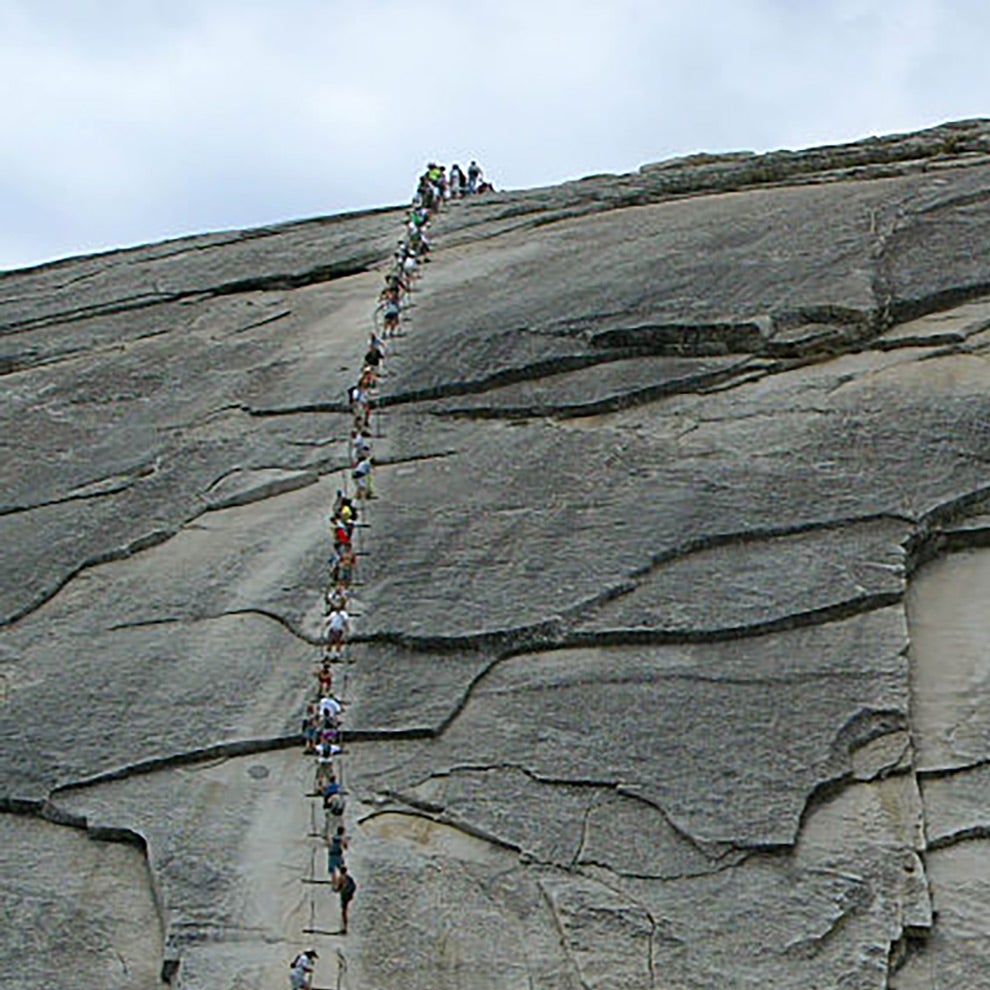A on the hiking route up Half Dome in Yosemite National Park was horrifying and tragic. On July 13, 2024, Grace Rohloff, an Arizona State university student, was descending the popular passage—which is traversed by metal cables for protection—when she lost her footing and slid just beyond her father’s reach.
Jonathan Rohloff watched his daughter tumble 200 feet to her death. The two were expert hikers. The incident happened during a sudden rainstorm, which made the granite path slippery.
Grace is the seventh hiker since 2006 to have died slipping off the Half Dome cables in wet conditions. Others have had close calls. The last incident was in 2023, when three people slipped in three separate incidents, but fell onto rock ledges and survived.
The regularity and similarity of these accidents has some people, including Grace’s father, wondering if the Half Dome cables should be modified, or even shut down. “It’s not going to bring my daughter back, but I would like to strongly advocate for a safer way to get to the top of Half Dome,” he told SFGate.com
I regularly recreate in the mountains with my 23-year-old stepdaughter, and I can’t help but ask myself a similar question. Are the Half Dome cables worth it?
Climber Alex Honnold, of Free Solo fame, thinks so. “People have totally transformative experiences hiking Half Dome,” he says. “They propose up there, they spread ashes up there.” Honnold told me he believes the cables should remain open.
The Half Dome cables protect the last 400 feet of an eight-mile hiking route to the top of the iconic batholith. The cables section is a Class III scramble with high-consequence exposure. It’s about as steep as a typical staircase—45 degrees—but without steps, just smooth granite beneath your feet.
The Sierra Club installed the cables in 1920. The steel system has since been rebuilt and reinforced, but the original idea is the same: a series of poles with cables strung between that serve as handrails. There is also a wooden plank across the path at each pole, approximately ten feet apart, to help brace against slides.
Hikers walk single-file between the cables. To prevent overcrowding, the National Park Service limits access to 225 people per day, using a permit system. Thousands of people summit Half Dome in this manner every season.
Rock climbers also use the cables. The method is considered the easiest, safest way to descend after climbing one of Half Dome’s technical faces. Honnold says he prefers to walk on the outside of the cables, grabbing onto just one. “You can pass people more easily,” he explains. “And the rock is actually a lot more textured on the outside because fewer people have walked on it.”
I doubt that Yosemite rangers would recommend this approach. I reached out to the NPS for comment, and they declined. The organization has published extensive information online about how to safely hike Half Dome, including tips for limiting your risk on the cables and elsewhere. The park service responds to about 100 injuries a year on the route, across all sections.
on the Half Dome Day Hike webpage, park ranger Vickie Mates says, “Most deaths and injuries on Half Dome have happened when the rock is wet.” She advises to check the weather before starting the hike. “In the summer, mornings can be deceptively clear and warm, but in the afternoon, cold rain and lightning can quickly move in,” says Mates.
Honnold says the general consensus in Yosemite is that the park service does a good job helping people understand the risks. “Just to pick up your permit, you have to go through a safety briefing,” he says. “There are signs starting at the trailhead saying things like this is dangerous and you could die, and even a ranger present at the subdome [the section just before the cables] checking permits.”
The Park Service also closes down access to the cables during the shoulder seasons, when rain and snow are more regular.
And yet, experienced hikers like Grace Rohloff still end up on the cables in the rain, and pay the ultimate price for it. Which, according to Honnold, isn’t because the cables are dangerous, it’s because recreating in the mountains is inherently risky. “You can never make the mountains completely safe,” he says.
Climber Hans Florine, who has owned a home in Yosemite National Park for more than 35 years, echoes Honnold’s sentiment. Florine adds that one element of visiting the park that people miscalculate is the frequency of summer afternoon rainstorms. Even with his years of experience, he’s still been unexpectedly caught in the rain, including on Half Dome.
“The sky looks clear and blue in the morning so you think you’re safe,” Florine says. “But you can’t actually see the entire sky because Half Dome is blocking up to half of your view. You get to the top and suddenly, there’s a dark, nasty thunderhead that crept up from the other side.”
Florine says the conversation shouldn’t be about whether or not the cables are safe, it should be more pragmatic: how to survive on the cables when caught in the rain. Florine also mentioned the popular via ferrata as an option—the European system for protecting mountaintops with high exposure so that hikers can more safely summit.
It wouldn’t be all that different from the existing system, with the added ability for people to connect themselves to the cable using a specialized carabiner. “But people will still have to decide to clip in,” Florine says. “And it won’t protect them from lightning.”


